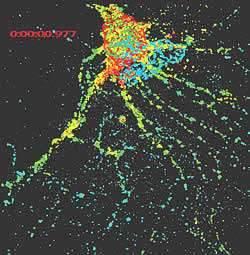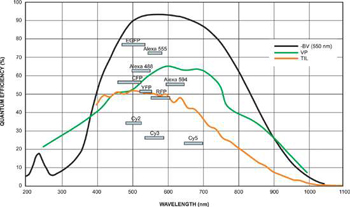Resources
 Part of the Oxford Instruments Group
Part of the Oxford Instruments Group
Expand
Collapse
 Part of the Oxford Instruments Group
Part of the Oxford Instruments Group

The capability to perform rapid, multi-dimensional imaging of living cells or model organisms is becoming increasingly necessary in many areas of modern biological research. Much of fundamental biological phenomena (spanning development, repair, cancer, cell cycle, signalling, motility, intracellular transport and viral pathways), involve microscopic structures moving rapidly through 3D spatial dimensions.In order to capture these intricate, interactive processes effectively in "real time", we are required to perform rapid time-lapse imaging of the cell through all three spatial dimensions i.e. effectively 4D imaging.
Furthermore, since we commonly want to follow the motion and interactions of multiple intracellular structures, this often requires us to either simultaneously or very rapidly switch between, the excitation and imaging of several spectrally separated fluorophore labels i.e. 5D! Underlying all direct imaging studies of living cells or organisms, is the desire to preserve the live subject for as long as possible, through minimization of both phototoxic cell/tissue damage and photobleaching of the incorporated fluorophores. Techniques that may be employed for 5D cell imaging include spinning disk confocal microscopy, deconvolution widefield and structured illumination, all of which can benefit from using Electron Multiplying CCD technology. e.g. iXon EMCCD Camera.

Andor's EMCCD technology is the ideal detector for incorporation into your ultrasensitive 4/D microscopy set-up, whether as a key component in our Revolution confocal live cell imaging system, or as a "stand-alone" EMCCD + iQ imaging software solution. The extraordinary signal-to-noise (S/N) ratio offered is significantly greater than that afforded by conventional point scan detectors. Furthermore, since it is a rapid-readout imaging device the EMCCD yields rapid frame rates, ideally suited to rapid acquisition of z-stacks and time-lapse sequences.The spectral dimension is accessed either through fast switching between multiple fluorophores, or even splitting of the emission signal simultaneously onto different areas of the sensor. There is also the possibility to perform true "spectral imaging" covered elsewhere in this catalogue. This is covered elsewhere within this section. Through minimization of excitation powers, the rates of dye photobleaching and cell phototoxicity are significantly reduced. iXon3 EMCCD Camera and Luca electron multiplying CCD imaging platforms each displays single photon sensitivity combined with high Quantum Efficiency (QE) at multi-MHz rapid readout speeds.
